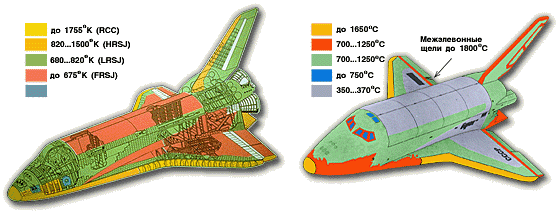
The
Progress is a Russian expendable freighter spacecraft. The spacecraft is an unmanned resupply spacecraft during its flight but upon docking with a space station it allows astronauts inside, hence it is classified manned by the manufacturer . It was derived from the Soyuz spacecraft, and is launched with the Soyuz launch vehicle. It is currently used to supply the International Space Station, but was originally used to supply Russian space stations for many years. There are three to four flights of the Progress spacecraft to the ISS per year. Each spacecraft remains docked until shortly before the new one arrives. Then it is filled with waste, disconnected, deorbited, and destroyed in the atmosphere.
It has carried fuel and other supplies to all the space stations since Salyut 6. The idea for the Progress came from the realisation that in order for long duration space missions to be possible, there would have to be constant source of supplies. It had been determined that a cosmonaut needed 30 kg of consumables a day; this equates to 5.4 tonnes over a six-month stay. It was impractical to launch this along with passengers in the small space available in the Soyuz.
This spacecraft is still in use today for the International Space Station. Between February 1, 2003 and July 26, 2005, it was the only spacecraft available to transport large quantities of supplies to the station, as the Space Shuttle fleet was grounded after the breakup of the Columbia at the end of STS-107. For ISS missions, the Progress M1 variant is used, which moves the water tanks from the propellant and refueling module to the pressurized section, and as a result is able to carry more propellant.
Like the Soyuz (and unlike most American spacecraft), the Progress has an autonomous navigation system that usually allows for automatic docking with the space station. It can be manually overridden if necessary.
The European Space Agency (ESA) is planning its own supply freighter called the Automated Transfer Vehicle. The first of these, the Jules Verne, is due for launch in mid 2007. It will be able to carry up to 7.5 tonnes of cargo into space, roughly three times as much as the Progress, and will be launched every 12 months by an Ariane 5 rocket.

The
Automated Transfer VehicleThe International Space Station (ISS) depends on regular deliveries of experimental equipment and spare parts as well as food, air and water for its permanent crew. From 2007 onward, Europe's Automated Transfer Vehicle (ATV) will be one of the indispensable ISS supply spaceships.
Since the ATV is the heaviest and most complex spacecraft project ever developed in Europe, and because of its demanding requirements of human spacecraft safety, the launch campaign at the Centre Spatial Guyanais (CSG) in French Guiana will extend almost four months before lift-off.
Meanwhile in Europe, from April to mid-summer, an extensive review will be conducted with NASA and the Russians to be sure that Jules Verne, its facilities and tri-lateral ATV procedures are ready to support Jules Verne ATV inaugural mission. Qualification of the ATV Control Centre is almost finalized, a large part of the system validation test programme has been completed and the normal operations qualification programme has started and is on schedule for launch readiness by end-July this year.

The new
Crew Exploration Vehicle, which will replace the Space Shuttle after 2010, will have, like Progress, two unmanned variations. One version will retain the pressurized crew module, but will be outfitted with storage lockers that can allow astronauts to bring fresh equipment onboard, along with being able to return experiments to Earth. Another version, with the crew module replaced with a docking ring on an enlarged service module, will allow the ISS to be boosted into a higher (350+ mi.) orbit, allowing the ISS to avoid most of the atmosphere and reducing the need to reboost the station on a regular basis.
RKK Energia has proposed as a replacement for the Progress spacecraft a new spacecraft by the name of Parom which means ferry in Russian. This new spacecraft would retrieve either the proposed
Kliper or any other cargo container with a Russian airlock up to 15 tons back to the ISS.

 I wrote my first computer program on this personal computer in 1993 (or 1994). The simple computer was a CASIO FX-730P Personal Computer. With the RAM of only 8K bytes and a clock speed of about 400KHz, this simple computer can be interfaced with a printer or a cassete tape storage device.
I wrote my first computer program on this personal computer in 1993 (or 1994). The simple computer was a CASIO FX-730P Personal Computer. With the RAM of only 8K bytes and a clock speed of about 400KHz, this simple computer can be interfaced with a printer or a cassete tape storage device. The
The  The
The  The new
The new 
 Buran-Energia is the Russian Space Shuttle system made up of the space orbiter called Buran (Snowstorm/Blizzard) and its ultra powerful heavy lift booster system known as Energia (Energy).
Buran-Energia is the Russian Space Shuttle system made up of the space orbiter called Buran (Snowstorm/Blizzard) and its ultra powerful heavy lift booster system known as Energia (Energy). Yet sadly, Buran-Energia had but one successful unmanned space flight before the whole project was suspended through lack of funds in 1993.
Yet sadly, Buran-Energia had but one successful unmanned space flight before the whole project was suspended through lack of funds in 1993.
